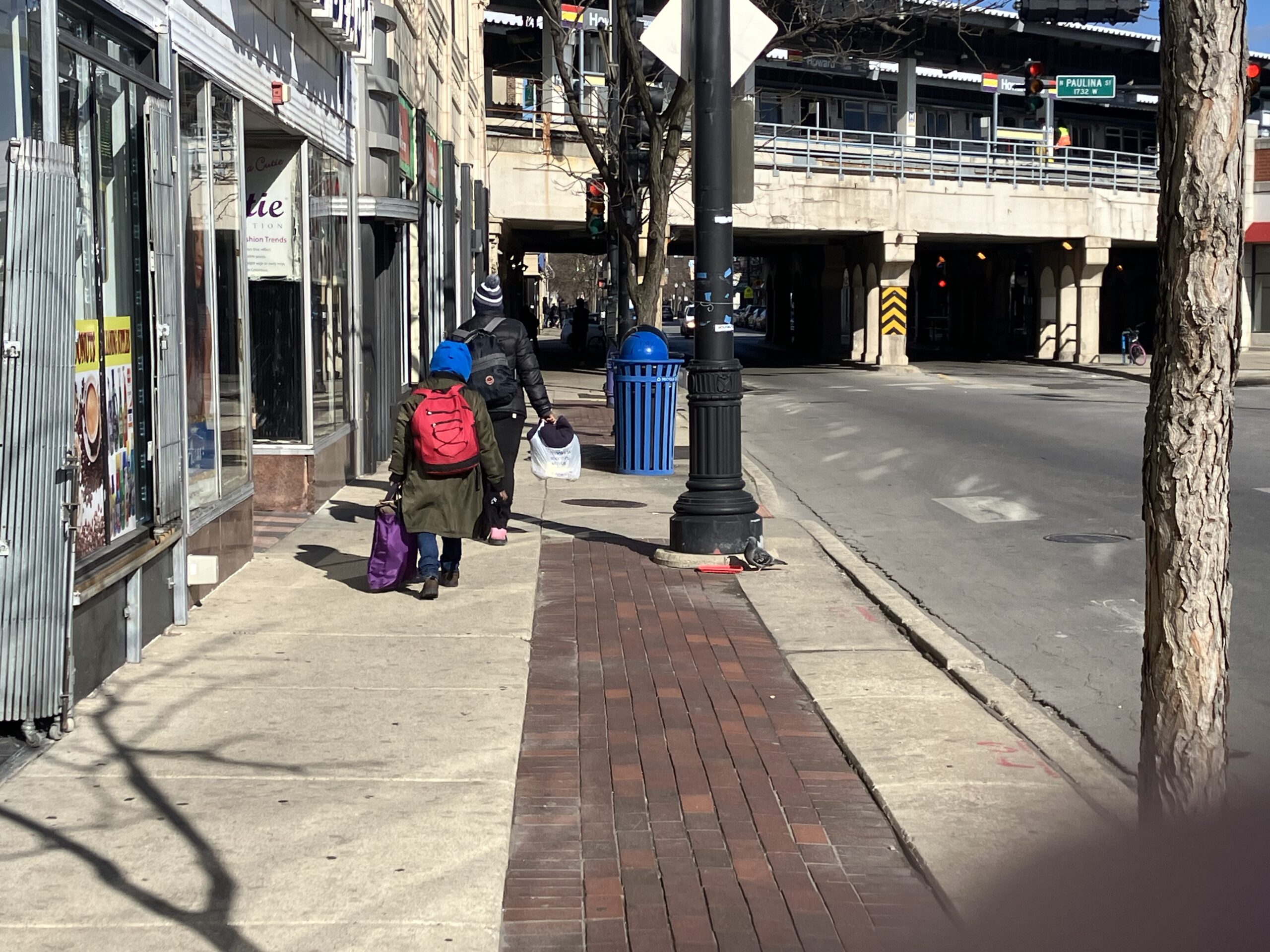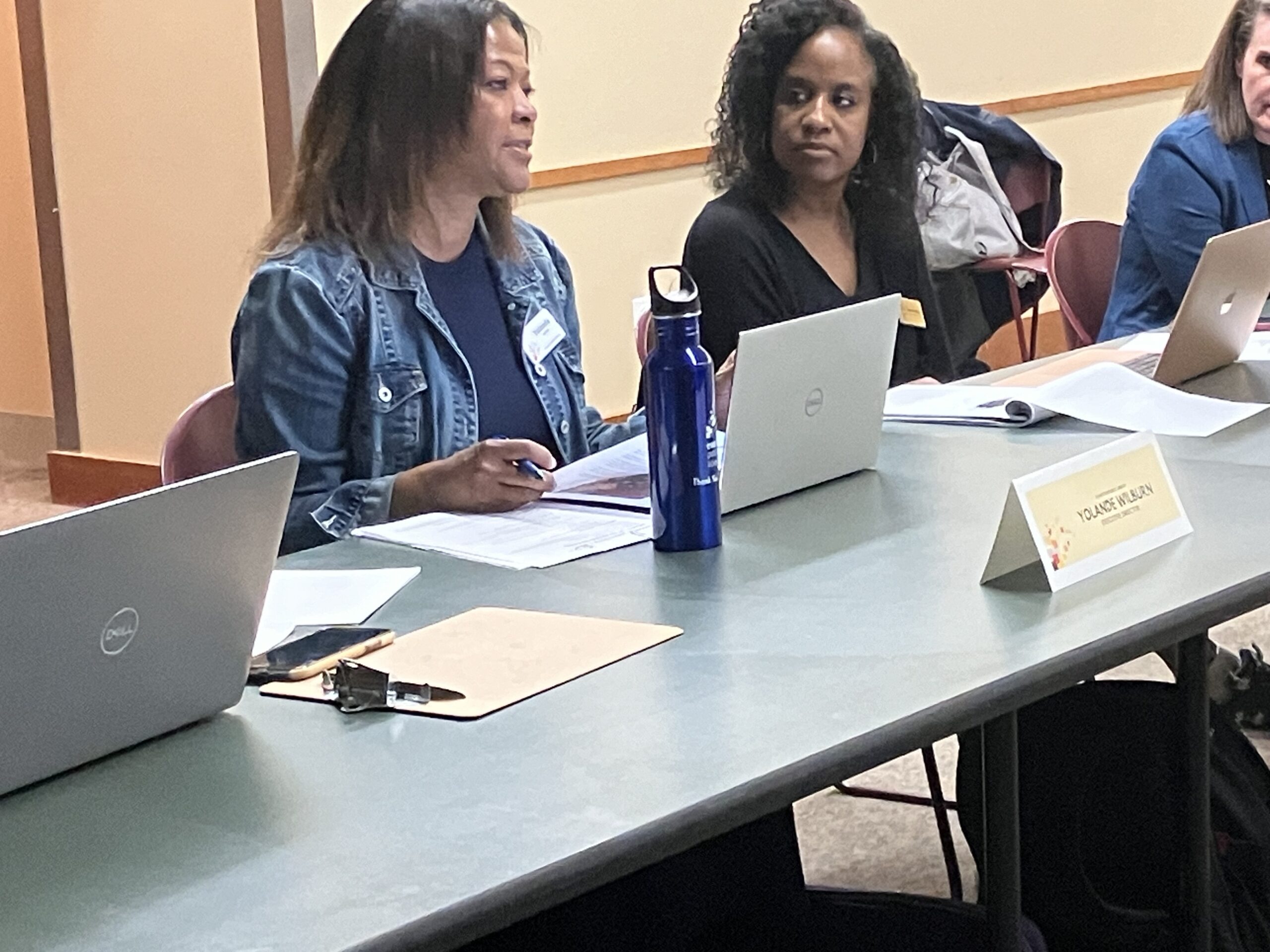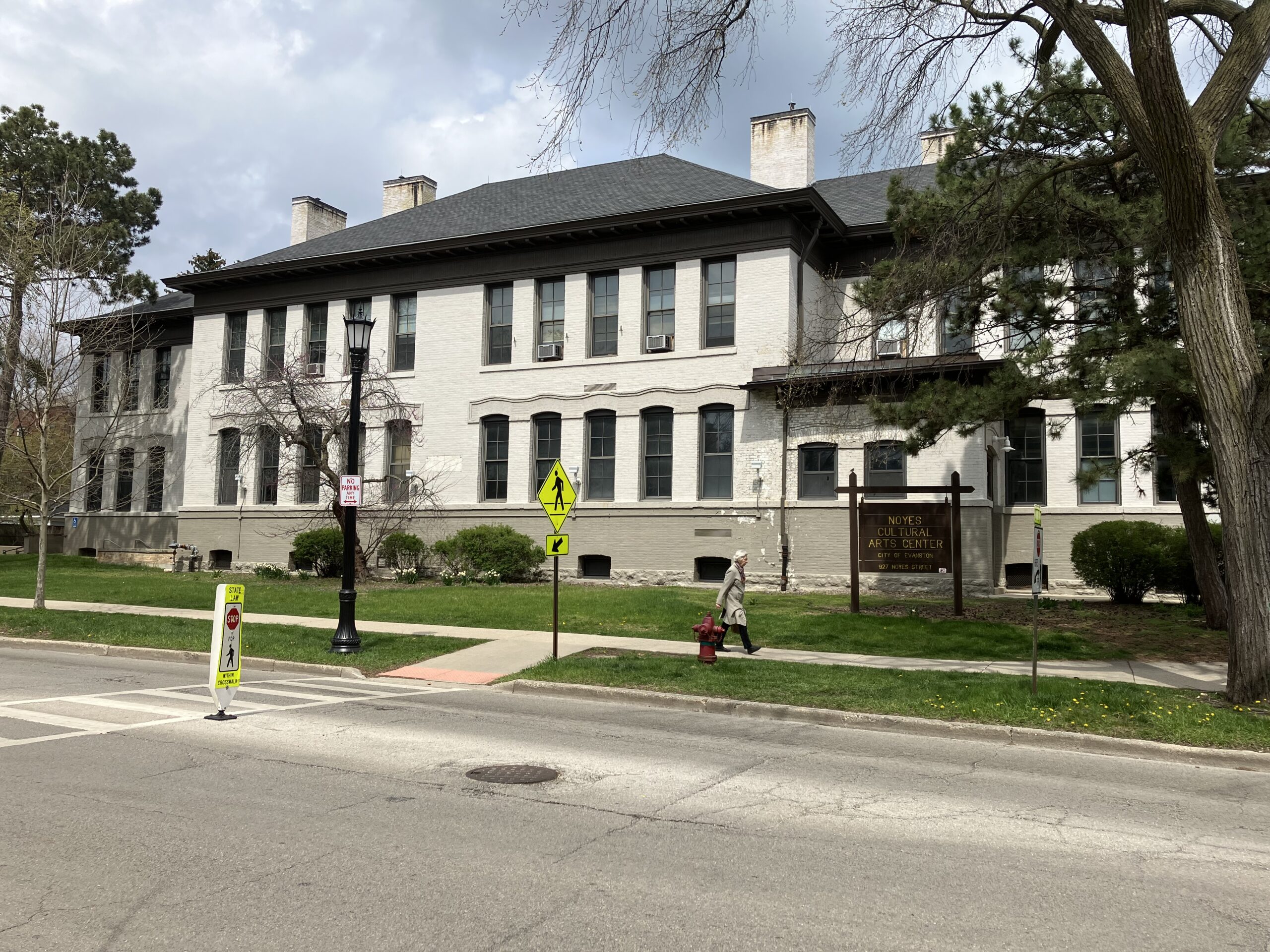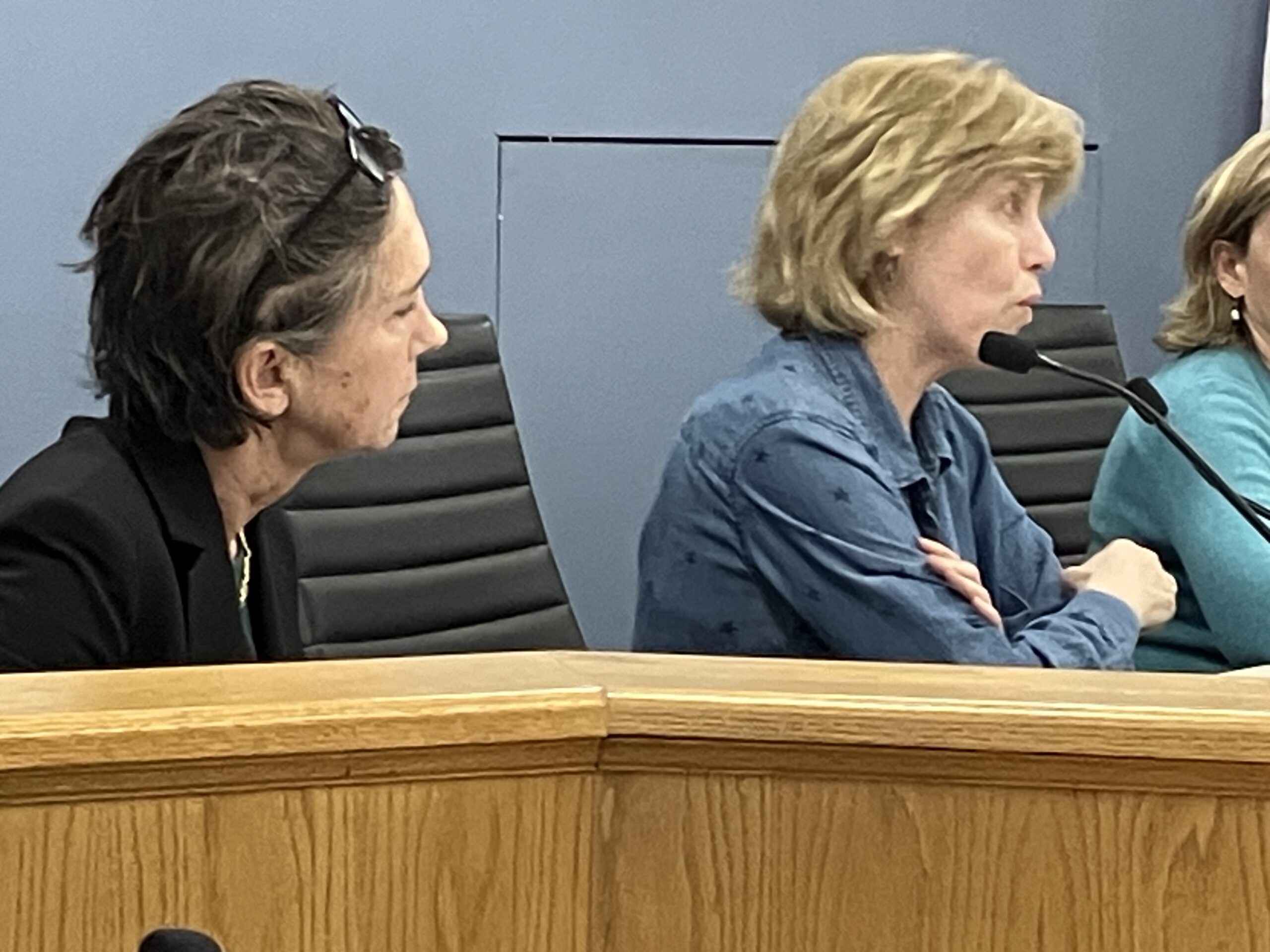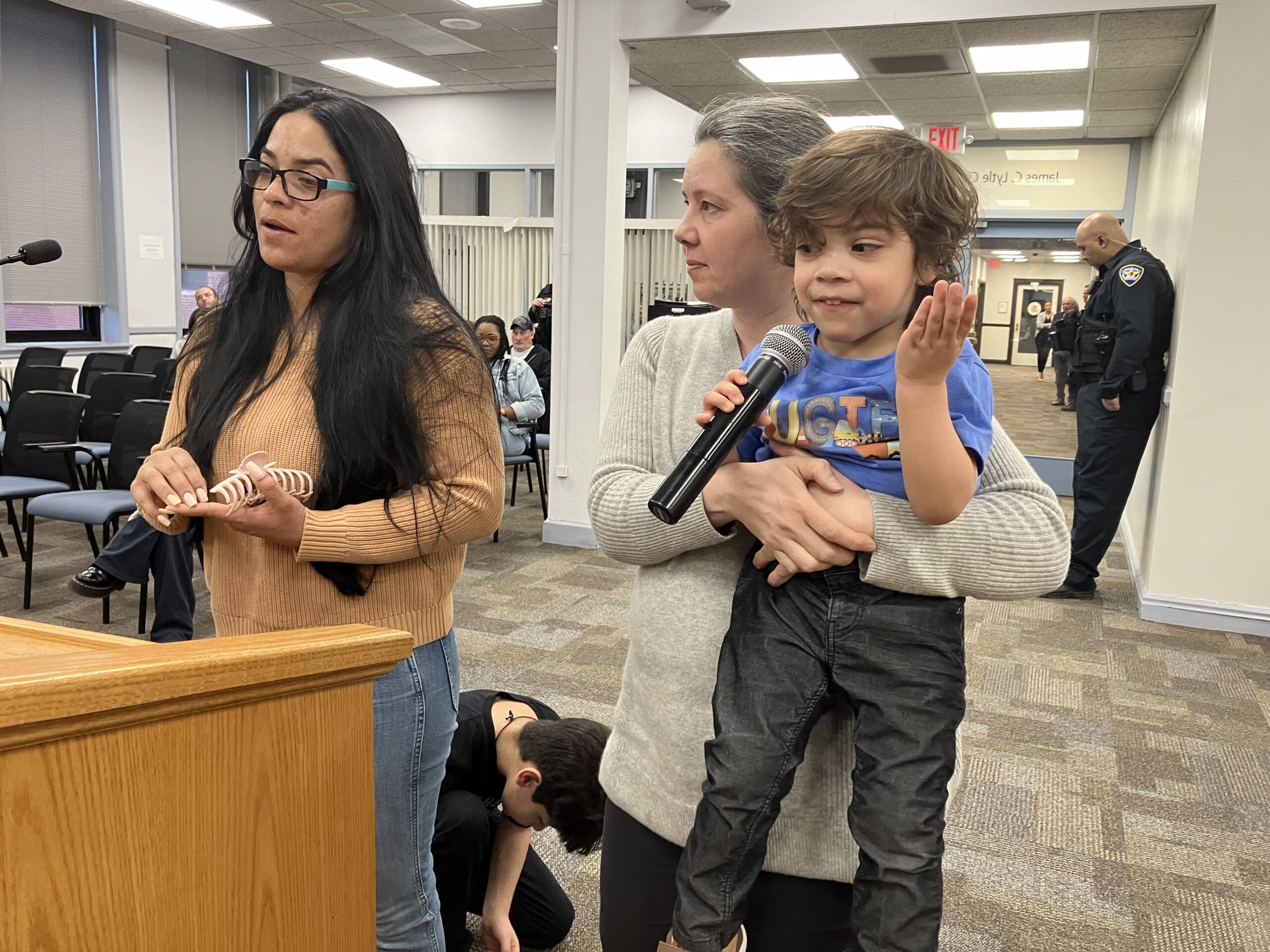By Bob Seidenberg
Evanston City Council members have delayed until May consideration of a plan to aid the city’s unhoused population, including addressing an encampment at the Howard Street viaduct on the city’s far south side.
After concerns from colleagues, Council Member Devon Reid (8th Ward) on Monday ultimately moved that his $500,000 request be tabled until May 28, in hopes of taking a more comprehensive approach then. The council approved tabling the plan by a 6-0 vote.
Reid’s proposal seeks $200,000 to fund support services for District 65 students facing or at risk of homelessness, and another $300,000 to go to the city’s Health & Human Services Department to address encampments at Howard Street and in downtown.
Reid said the funding would support “interventions that can make a real difference in the public safety, attractiveness of public transit in the city of Evanston and Howard Street.”
The $500,000 request initially was part of a $1.75 million package that included $1.25 million for Connections for the Homeless, but Reid said he removed the Connections funding from his request because there was “more work to be done” on that component.
Memo: ‘Illicit drug use’ at Howard site
Reid called for a plan last year to address the encampments last summer, putting council members on notice that 15 to 20 unhoused people, some with severe substance abuse issues, had formed an encampment on the Evanston side of Howard Street, across from the CTA transit station, at the viaduct.
A city outreach team now visits the viaduct daily, “including weekends, to speak to the people who are spending time there,” wrote Ike Ogbo, the city’s Director of Health and Human Services, in a memo to the council.
“These individuals do not live in the space but choose to spend time there. During engagement with visitors to the specific area, no one will take ownership of the collection of items in the space,” he wrote. “The outreach team has found evidence that not only is there illicit drug use in the space, but many find it to be a place to ‘hang out.’
“There have been microwaves, coffee pots, and other items plugged into the outlet on the property of the CTA, making the space even more comfortable for additional visitors who want to dwell for longer periods of time. In addition to drug use, visitors commune in this area to play music, eat food and enjoy each other’s company in a conveniently sheltered space from the rain and cold winds.”
Homelessness has been on the rise in the United States, increasing 6% since 2017, Ogbo said, citing a National Alliance to End Homelessness report. “Evanston is not insusceptible to homelessness,” he wrote, noting that there have been several other intermittent encampments identified at different locations in the city.
Regular complaints from residents
During Monday’s discussion, Reid told council members that he fields calls “fairly regularly” from residents in both Evanston and Chicago about the encampment issue. He said one of the calls directed his way from Chicago’s 49th Ward was from an older woman.
“And the woman shared with me that she was afraid to get off on the Paulina side of the [Howard Street CTA “L”] platform, which is close to her home, because she fears as an elderly woman she could be a target for being mugged or something else,” Reid told council members.
He said when he made his initial proposal for funding last year his aim was to have money allocated in the city’s 2024 budget to address the problem. That didn’t happen, however. He said that proposal included a commitment for 30 slots of drug treatment. “That is probably not on the table now,” he said.
He told council members, “I truly believe that our Health and Human Services Department – and really in conjunction with our Parks and Recreation Department, which runs the city’s outreach team – need this additional funding to be able to address the situation in a multitude of ways.”
Funding for District 65, he said, “will allow us to take some of the burden off the Health Department” staff, who have been working with the district to find housing for people, “so this will make our own operations more efficient.”
“As a former District 65 student who faced homelessness myself,” he added after the meeting, “it [the school support] is really close to my heart.”
Nieuwsma: At some point, will need ‘robust’ response
In discussion, a number of council members said they shared some of Reid’s concerns but wanted a more comprehensive plan before approving any funding.
Council Member Jonathan Nieuwsma (4th Ward) acknowledged “that not only our community, but our country, has a problem with homelessness.” Until now, he said, Evanston has managed to deal with the problem without dipping too much into the city’s own funds, leveraging state, county and federal money.
At some point, though, he said, “it will … demand an Evanston response, using Evanston money in a more robust way.”
I want to make sure that not if, but when we get to that point, we are doing so in a thoughtful and proactive, strategic manner in collaboration with all the community stakeholders that are involved in dealing with with these issues,” he said.
In the meantime, Nieuwsma said, a number of initiatives are on their way
to the council, addressing different factors in homelessness. He mentioned an $810,000 rental assistance program that grew out of the participatory budgeting process and a $400,000 allocation for the city’s community responder program, which will send trained unarmed civilians to answer some 911 calls and attempt to resolve issues.
“Coming to us very shortly will be a recommendation from HCDC [the city’s Housing and Community Development Committee] to invest a million dollars of federal money in the Margarita Inn,” he said, referring to the city’s first permanent homeless shelter, at 1566 Oak Ave., in his ward. “So we are taking some strategic and thoughtful approaches here,” he said.
Reid stressed the need for urgency, noting the conversation around the issue has been going on close to a year, and “I’ve got people in my ward who are afraid to take the train,” he said, referring to the encampment outside the Howard CTA station.
Harris: City needs to meet with District 65
Council Member Krissie Harris (2nd Ward) argued that the situation at Howard is not strictly a homelessness issue. Rather, “it’s a drug area,” she maintained. “The people are passed out, passing out. …
“Most of these people have somewhere to be,” she said. “They don’t want to be there, because they can’t engage in the behavior that they have there [on Howard Street].”
She recalled an attempt to bring Peer Services, a longtime addiction treatment center in Evanston, to the area “to get service to these outside residents.”
But you “can’t make anybody want to get help until they want to get help,” she said to council members. “ So I’m not comfortable without a plan. We are short on money. Our government, scarily, has become a social service agency of Evanston, not a government. And we’ve got to figure that out.”
District 65 is the city’s biggest taxing body, Harris noted. So in figuring out a plan, “we [the city and District 65] need to sit at a table and do that [arrive at a solution] collectively.”
Reid: Group at spot 24 hours a day
Council Member Bobby Burns (5th Ward) said whether the issue is tabled or not, he would like to see a proposal tailored to address the situation at Howard Street. “I’m not prepared to support anything for District 65 at this point,” he said. “I’m not prepared to support, honestly even anything for the city, until we have a conversation about how we want to go about this.”
Council Member Clare Kelly (1st Ward), in whose downtown ward small encampments have sprung up from time to time, also said a broader plan should be considered. “I think we need measurables,” she said. “How do we measure success? What are the targeted outcomes? There’s just so much more involved. I do think this is something that we desperately do need to address.”
Reid said he recognized that drugs are an issue, mentioning it in his call for action to the council last year. He said he understood Harris’ contention that some of the individuals at the Howard Street encampment have their own housing, but estimated that it’s a small number. If more did have housing, explained later, it would be easier for the city to move them from their current spot, based on a recent Chicago consent decree.
As things stand now, he told council members, the people at Howard are there round the clock. “They have gone there late at night and they’re still there early in the morning,” he said. “So whether they’re homeless or not, they’re there, seeming, 24 hours a day.”
He said the city would need to develop alternatives, including providing housing, if officials are to move them.
Memo outlines coordinated approach
Ogbo reported in his memo that a number of meetings with service providers have been held to fashion a strategy to address the Howard encampment and other intermittent city encampments. After the issue arose in July 2023, he wrote, Reid “convened and organized meetings with City staff and multiple organizations, including Peer Services, Connections for the Homeless, the CTA, Chicago’s 49th Ward Alderman’s Office, and the City of Chicago Department of Family Support Services. The gathering aimed to coordinate efforts to deliver necessary aid to the unhoused population at the Howard viaduct.”
Ogbo said the “fundamental elements of this coordinated approach” being considered include:
- “Securing and funding housing rapid response events.
- Offering drug treatment and medication.
- Providing case management services.
- Engaging public safety options for those who decline assistance.
- Activating spaces where large encampments have previously existed.
- Providing adequate lighting in the vicinity for security and safety purposes.”
“The key to amply succeeding in this venture is matching people to affordable, appropriate, and stable housing, including services for health care (mental health and substance abuse treatment), employment, and childcare services,” Ogbo wrote.
“Evanston has limited affordable units and rising rents, which will be challenging to achieve without having a significant affordable housing program to address the housing needs. It requires the coordination of a service system not only to provide housing but also to support long-term housing stability and the creation of enough permanent housing to meet the demand,” he concluded.
Connections for the Homeless, as “the professionals in the field,” would lead the $1.25 million portion of the project that wasn’t part of the discussion Monday night – and would tackle the growing needs of Evanston’s unhoused population, Ogbo’s memo said.
The program drawn up would address not only the Howard encampment but the conditions that might lead to other encampments in the future, Ogbo’s memo said.
